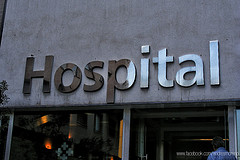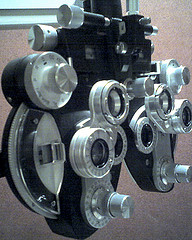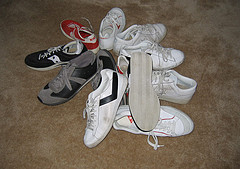 One of the many ways that patients are at the mercy of their health care providers and insurers is through pharmaceuticals and prescriptions. Doctors write specific prescriptions, sometimes based on pharmaceutical advertisements, that may require that patients receive name brand drugs. Insurers place limitations on the types of drugs that insureds can access. Another way that insurers and pharmaceutical companies have been limiting patient options is by engaging in health care fraud in order to increase profits at the expense of patient choice. Luckily, False Claims Act lawsuits have exposed pharmaceutical fraud, and actions have been taken against some major perpetrators.
One of the many ways that patients are at the mercy of their health care providers and insurers is through pharmaceuticals and prescriptions. Doctors write specific prescriptions, sometimes based on pharmaceutical advertisements, that may require that patients receive name brand drugs. Insurers place limitations on the types of drugs that insureds can access. Another way that insurers and pharmaceutical companies have been limiting patient options is by engaging in health care fraud in order to increase profits at the expense of patient choice. Luckily, False Claims Act lawsuits have exposed pharmaceutical fraud, and actions have been taken against some major perpetrators.
Medco Fraud Settlement
According to the Corporate Crime Reporter, former AstraZeneca employees filed a qui tam lawsuit against AstraZeneca, a pharmaceutical manufacturer, and Medco, a company that manages pharmacy benefits. The lawsuit alleged that Medco and AstraZeneca entered into hidden financial agreements based on which Medco received lower prices on three AstraZeneca drugs in exchange for including one of AstraZeneca’s medications as the only one of its kind on some of Medco’s list of covered prescriptions.
 Healthcare Fraud Lawyer Blog
Healthcare Fraud Lawyer Blog






 rise. In May 2010, as alleged in court filings, Tai took over operations at United Medical Diagnosis (“UMD”), a radiology clinic in Flushing, New York. From May 2010 through May 2012, Tai and his staff allegedly used the identity of the clinic’s prior owner, a radiologist, to submit more than $30 million in claims to Medicare and Medicaid. The claimed services were not actually performed and the bills were submitted without the knowledge or consent of the former UMD owner. United States Attorney Loretta Lynch explained, “The defendant sought to enrich himself and fund his lifestyle first by stealing a doctor’s identity and then using that stolen identity to steal Medicare and Medicaid funds…While the documentation provided was a sham, the money stolen was very real.”
rise. In May 2010, as alleged in court filings, Tai took over operations at United Medical Diagnosis (“UMD”), a radiology clinic in Flushing, New York. From May 2010 through May 2012, Tai and his staff allegedly used the identity of the clinic’s prior owner, a radiologist, to submit more than $30 million in claims to Medicare and Medicaid. The claimed services were not actually performed and the bills were submitted without the knowledge or consent of the former UMD owner. United States Attorney Loretta Lynch explained, “The defendant sought to enrich himself and fund his lifestyle first by stealing a doctor’s identity and then using that stolen identity to steal Medicare and Medicaid funds…While the documentation provided was a sham, the money stolen was very real.”
 Allegedly, defendants recruited homeless people from soup kitchens and shelters, specifically targeting those with valid Medicaid cards, by promising them free sneakers or other footwear. Recruits would be taken to medical clinics (typically places owned by one of the scammers) where they underwent unnecessary tests and were labeled with fake diagnoses. Scammers would then bill Medicaid to the tune of hundreds or even thousands of dollars per “patient.” Often, bills included claims for medical equipment and testing that were either inappropriate or wholly fictitious and for unnecessary follow-up visits. Before leaving, the homeless men and women were allowed to pick a pair of shoes from stacks of footwear in the clinics’ basement. In some cases, the recruiters were paid a referral fee per recruit; in other cases, Medicaid payments were split between the recruiter and the doctor.
Allegedly, defendants recruited homeless people from soup kitchens and shelters, specifically targeting those with valid Medicaid cards, by promising them free sneakers or other footwear. Recruits would be taken to medical clinics (typically places owned by one of the scammers) where they underwent unnecessary tests and were labeled with fake diagnoses. Scammers would then bill Medicaid to the tune of hundreds or even thousands of dollars per “patient.” Often, bills included claims for medical equipment and testing that were either inappropriate or wholly fictitious and for unnecessary follow-up visits. Before leaving, the homeless men and women were allowed to pick a pair of shoes from stacks of footwear in the clinics’ basement. In some cases, the recruiters were paid a referral fee per recruit; in other cases, Medicaid payments were split between the recruiter and the doctor.  Last Thursday,
Last Thursday,  Last month, news site
Last month, news site 